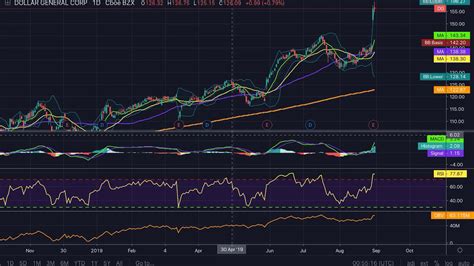how to use trading indicators for market insights in cryptocurrency
The world of cryptocurrency has become increased volatile and dynamic, with prices fluctuating rapidly in response to a multitude of factors. As traders, it can be overwhelming to navigate the complex landscape of this asset class. One offten-overlooked aspect of trading is the use of technical indicators, which provide valuable insights into market trends and patterns. In this article, we’ll explore how to use trading indicators for market insights in cryptocurrency, including how to choose the right indicator types, set them up correctly, and interpret their signals.
why use indicators?
Trading indicators offer a wealth of information that can help traders make informed decisions about when to buy or sell a particular asset. By analyzing chart patterns, trends, and other technical data, traders can gain a deeper understanding of market dynamics and make more accurate predictions about price movements. In the context of cryptocurrency trading, indicators provide an additional layer of analysis that complements fundamental research.
Types of Indicators
When it comes to choosing trading indicators for cryptocurrency, there are numerous options available. Here are some common types of indicators:
- Moving Averages : These lines plot the average price of a security over a specified period, providing a smooth representation of short-term and long-term trends.
- RSI (Relative Strength Index) : This indicator measures The Magnude of Recent Price Changes to determine overbought or overbought, helping traders identify Potential Buy or Sell Signals.
- Stochastic Oscillator : This indicator provides a momentum-based measure that helps identify overbought and oversold conditions, as well as divergence from trend lines.
- MACD (Moving Average Convergence Divergence) : This indicator uses two moving average to track the relationship between price and momentum, helping traders detect potential buy or sell signals.
- Bollinger Bands : These bands consist of a middle band and upper/lower bands that plot the average price over a specified period, providing an idea of volatility.
Setting up indicators correctly
To get the most out of your indicators, it’s essential to set them up correctly. Here are some tips:
- Choose the right time frame : Select an indicator that is suitable for your trading strategy and time frame.
- Use A Suitable Period : Most Indicators Work Best with Shorter Periods (E.G., 14-day RSI), While Longer Periods (E.G., 50-day MACD) may be better suited for trend-following strategies.
- Adjust parameters : Experiment with different parameter settings to optimize the indicator’s performance.
Interpreting Indication Signals
Once you’ve set up your indicators, it’s time to interpret their signals. Here are some tips:
- Look for buy or sell signals : identify when an indicator indicates a potential buy or sell signal.
- Consider Multiple Indicators : Combine Different Indicators to increase the chances of making accurate trades.
- Use Support and Resistance levels : Identify levels that may trigger Buy or Sell Signals, such as support/bullish levels or resistance/trendline patterns.
- Candlestick monitor patterns

: Analyze Candlestick patterns, which can indicate potential buying or selling opportunities.
Case Study: Using Indicators in Cryptocurrency Trading
Let’s consider a hypothetical example of using indicators to trade bitcoin (BTC) on the Binance Exchange. We’ll set up three different indicators and analyze their performance over time.
* Moving AVERAGE CONVERGENCE DIVERGENCE (MACD) : We use a 14-day MACD line with a fast and slow period to detect potential buy or sell signals.



